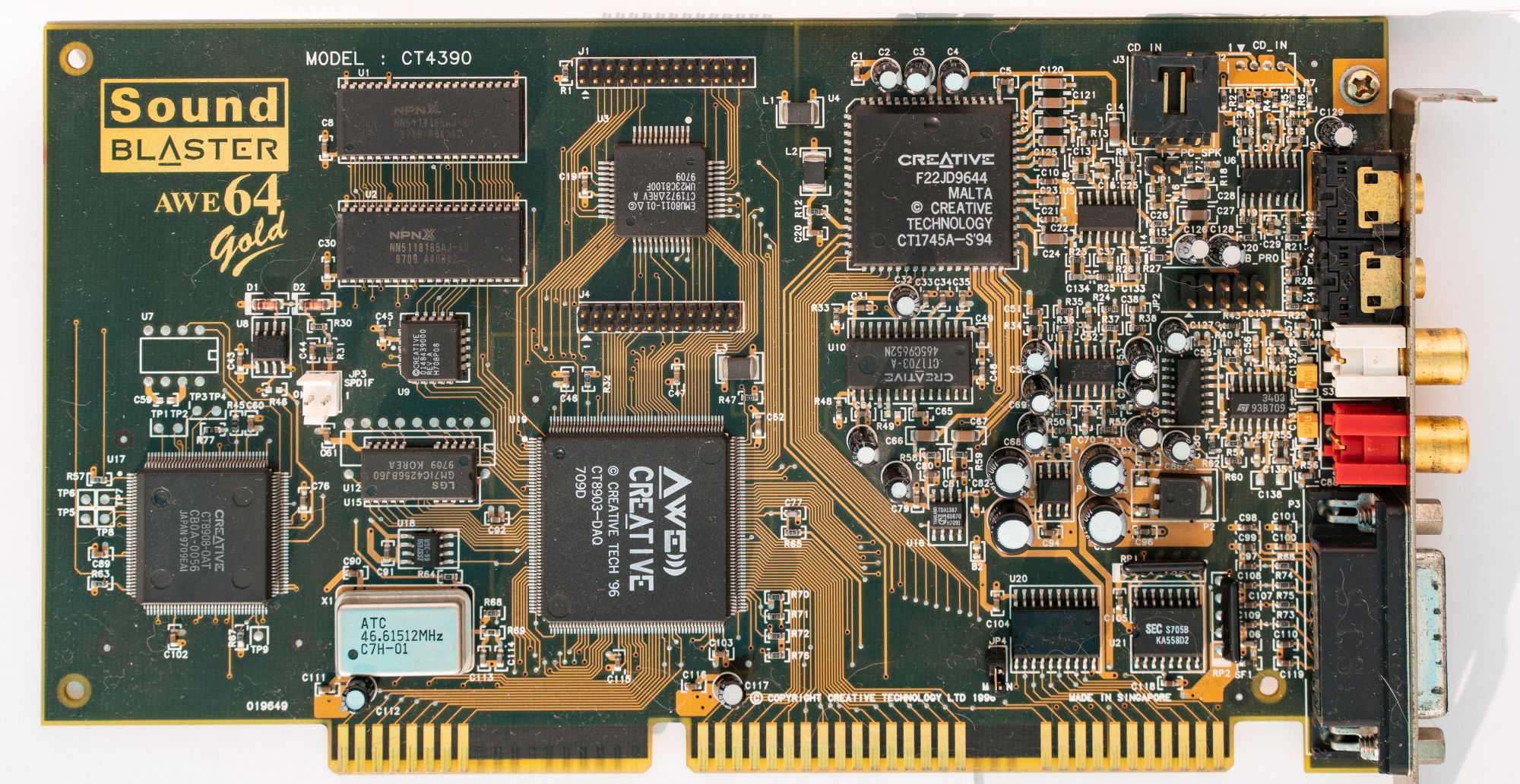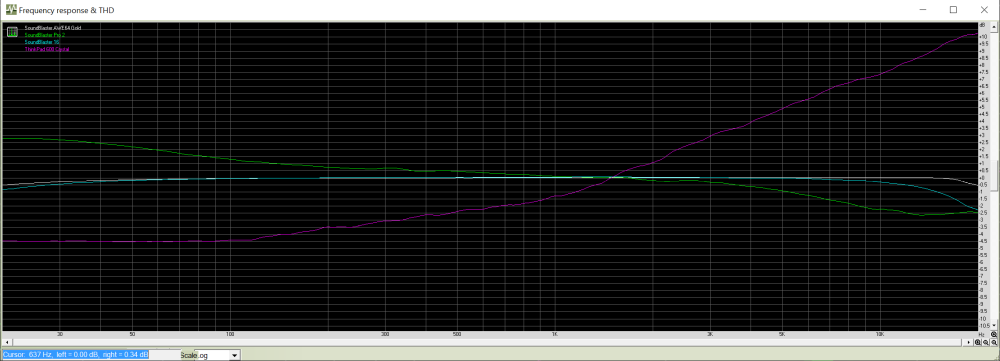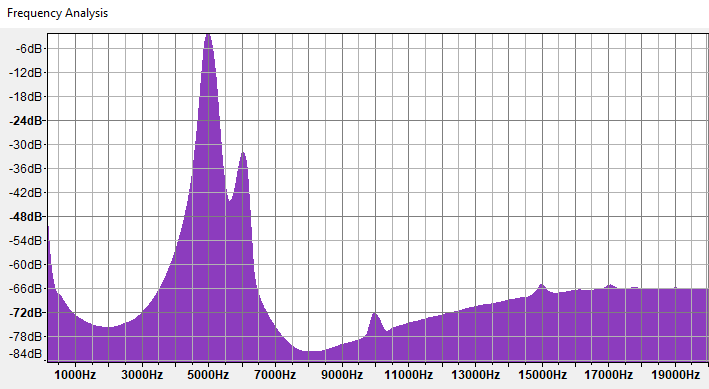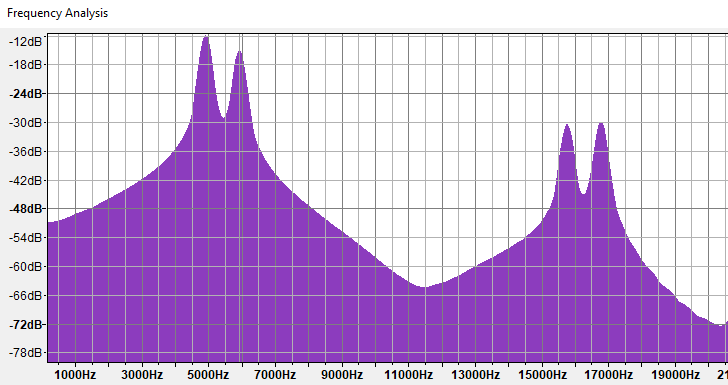
I settled on three sound cards for the ISA bus, and each of them has its own characteristics. All three are appreciated by collectors and builders of retro PCs, but the reasons for this are different. Sound Blaster 16 exactly matches my chosen period: if I bought a new computer at the end of 1992, it would be the most modern sound card from Creative. Sound Blaster Pro 2 is a bit older in terms of technology, but it is often called the best card for DOS games. Sound Blaster AWE64 Gold was released later and is simply considered the best ISA sound card: due to high-quality audio path and fashionable gilded connectors.
I will not try to arrange an intrigue: Sound Blaster Pro 2 will permanently settle in the 386th system. In this article I will share the results of my attempts to find out why in reviews on the Vogons forum, on YouTube they sometimes talk about a “clearer sound” in games, in while late sound cards, starting with SB16, are rated as sounding “dull, fuzzy, blurry”. My small study led to an interesting conclusion: SB Pro 2 subjectively (not everyone) likes it more, because its digital sound processing system is more incorrect than that of its followers.
All related articles:
0. 1992 in the computer press
1. Consider the motherboard of the 386th computer
2. Benchmark of the 386th processor and the dashing nineties
3. Difficult choice of sound card for DOS games
4. Features of Sound Blaster Pro 2 <- you are here
I keep a diary of a collector of old pieces of iron in a Telegram . There, I am slowly sharing the results of a new round of collecting mini-disc equipment.
Let's get acquainted with the applicants. Let's start with the newest (well, 23 years old) Creative Sound Blaster AWE64 Gold. This is a slightly improved version of the original AWE64 card, released in November 1996, which in turn replaced AWE32. Replacement turned out dubious. Firstly, in Sound Blaster AWE32, it was possible to expand the RAM for table synthesis samples using conventional SIMM modules, and they were cheap at that time. The AWE64 made a proprietary connector. Secondly, the full-size AWE32 now looks much more impressive than the "usual" AWE64. Both are too new for my 386th system. Table synthesis is not very interesting for me yet, and in the Gold version there are enough four megabytes for sample banks on the board. The AWE64 Gold compilation was easy to get: I already had this card, and if the sound quality of the older cards would be completely dull, then I could choose this quality option.

Creative Sound Blaster 16 is Creative's first true 16-bit sound card. Compared to the older ones, it allows you to play audio with CD parameters without restrictions. Sound Blaster Pro 2 reproduces 44kHz / 16bit digital data only in mono. By the standards of 1992, this is a weak argument in favor of SB16: nobody then stored digital music in WAV or compressed format on the hard drive, except perhaps their own recordings from a microphone. At best, they listened to CDs connected to the analog input of a sound card. Games with samples in CD quality on my computer most likely will not work. I have an early version of SB16, and this is both good and bad.

Well, since my version has the correct Yamaha OPL3 FM synthesis chip installed, the same as the SB Pro 2. Later Creative made their own version of the synthesizer (known as CQM), which at first sounded a bit different. Bad: in this revision of the board there are several serious bugs. One of the most important is the so-called DMA Clicking Bug . Simply put, some games use the Single-Cycle DMA mechanism to play digital music samples. In this mode, after playing a sample, the SB16 card of early revisions gives a clearly audible click. How does that sound in practice? I give this and other examples with the help of my favorite game Prince of Persia. At the end of each level you need to open the door to the next. The sound of opening the door is actually a short sample, which is repeated several times, creating the effect of a rising gate. After each microsample, the SB16 emits a click that is not found on other sound cards.
Well, my favorite: Sound Blaster Pro 2, bought at the last moment for very little money. As with the earlier version SB16, the address (usually 220), interrupt number (5 or 7) and the DMA channel (1) are set by jumpers directly on the board. If there is a magic line SET BLASTER = A220 I7 D1 in the autoexec.bat file ( more ), in most games the sound card will work without any drivers - they are required for additional features and for adjusting the volume and turning on / off the analog inputs. AWE64 Gold supports Plug and Play, interrupts are configured using a proprietary utility. However, after configuration, they are saved, and further, you can also do without drivers. One of the reasons for building a “real” retro PC with an ISA bus is that DOS games access the hardware directly, expecting to see a device on the ISA bus with exactly these parameters. Later PCI sound cards provide emulation, and usually work, but not always.

What else interesting can we see on this board besides jumpers-jumpers and a layer of dust? Three connectors for external devices: for connecting speakers, line input and for a microphone. Separate inputs for PC Speaker and sound from an optical drive. The volume control wheel hints at the presence of an amplifier for passive speakers on the board. Unfortunately, on Sound Blaster Pro 2 this amplifier is not disconnected, unlike SB16. He does not add quality to the sound. At one time, cheap passive speakers (AKA plastic pots with speakers) were common, and this volume control in the bowels of the back of the computer was completely uncomfortable. Now I have good speakers, with an amplifier, and a cheap circuit on the board only spoils everything. The problem can be solved with a soldering iron and removing a couple of elements, but I do not want to spoil the rarity. All three cards have a port for a joystick or for a MIDI device (in SB16 and AWE64 the MPU-401 standard is supported, in Pro 2 it is not supported), but at this stage it is not of interest.
Hifi smoker
How can sound cards be compared with each other? Since these are devices that reproduce sound, I decided to start with objective measurements of the quality of this very sound. This is what happened:

Here I am most interested in the dynamic range. In this test, a signal with a frequency of 1 KHz, with a maximum amplitude, is reproduced in the RMAA program. The difference between the signal and the noise is measured, which appears as a by-product of the digital-to-analog conversion, and due to the features of the analog part. The indicator of a good CD-player is 96 dB, a cassette deck is 60 dB, a mini-disc portable player is 87 dB. Here we see that, firstly, even the AWE64 Gold does not reach the CD player. The difference between the “premium” AWE64G and SB16 is not huge. SB Pro 2 is expected to make more noise than others, at the level of cassette technology, due to a non-disconnectable amplifier. In the right column are the results of the integrated sound of the ThinkPad 600 laptop. As you can see, everything is much worse there than with any of the older devices.

Let's look at the frequency response. ThinkPad 600 has some kind of wild game. The SB16 and AWE64 are more or less even. Sound Blaster Pro 2 has a slight rise at low frequencies and a noticeable block at high frequencies - and we will return to this fact.
Sound in games
Oh, this is not an easy topic. In this article, I will reduce it to one nuance in Sound Blaster Pro 2, although there are actually more differences between ancient sound cards. In some games, one card will fail, and the other will not. Somewhere, the sound will be “correct” on a card with a real Yamaha chip, and not with a replica from Creative. There are a lot of options, and we need to somehow simplify the task. So I simplified it by comparing all three sound cards in two games: Prince of Persia (version 1.3) and Doom. Comparisons when playing MIDI tracks I will not even post - they are not there. The musical theme in Doom and Prince of Persia sounds the same on all three cards, as well as in Dosbox and the ThinkPad 600 laptop. Maybe I don’t catch any nuances, but most likely these two games are not as demanding on hardware as other programs . This is how the Sound of Blaster Pro 2 sound card plays the prince of Persia theme:
Intro in the "Prince" and gave me a reason for further research. The game starts with a MIDI track, but there is one exception: in the video, 0:58 higher, the sound of the door being opened. This is a digital audio sample, and here it on Sound Blaster Pro 2 sounded somehow noticeably different than on SB16 or AWE64 Gold. I decided to make sure by recording the sound of the final battle with the “boss” of Prince of Persia at the twelfth level. I don’t have normal hardware for capturing video from retroPC yet, so the sound below is only in the video.
Here it is! Here! The sound with SB Pro 2 is noticeably clearer, there are more high frequencies. Sound Blaster 16 (as well as AWE64, Dosbox and other more modern sound systems) sound somehow more boring on this fragment. How did it happen? Comparing the information on the forums, I came to the following explanation. Here I am forced to leave an important remark: I am not an expert. If somewhere I made a mistake in the wording, I will be glad to clarify.
So, according to the Kotelnikov theorem, you can accurately record an analog signal in digital form and recreate it if its frequency does not exceed half the sampling frequency. For CD, the sampling frequency is 44100 Hertz, respectively, an analog signal with a frequency of up to 22050 kilohertz can be recorded and then reproduced reliably. In theory, but in practice, difficulties arise, and in this case, we are interested in the difficulties of converting a digital signal into an analog one, for subsequent amplification and transmission to speakers or headphones.
Digital-to-analog converters are not ideal, and tend, in addition to the main signal, to create a phantom copy with frequencies twice as high as necessary. There is an aliasing effect: for example, if there is a sinusoidal signal with a frequency of 12 kilohertz at the input, we get the necessary 12 at the output, as well as spurious signals with a frequency of 24, 36 kilohertz and so on. Further amplification can lead to improper processing of these high-frequency signals and the penetration of artifacts into the audible frequency range. There are two ways to deal with this: oversampling (we feed a digital stream to the DAC with a frequency of not 44100, but 88200 kHz or more) or a simple analog filter, which after the DAC cuts all frequencies above 20 kilohertz, which is considered the limit of the human ear.
Oversampling is used by default on modern devices, but in the early nineties it was quite expensive technology. And yes, if we are building a CD player, then everything is simple - we have one sampling rate. The problem with computer sound is that these frequencies can be different. In the case of Prince of Persia, we are dealing with audio samples recorded with a sampling frequency of 11025 kilohertz. In this format, we can save and transmit sound with a frequency of not more than 5.5 kilohertz, and this is quite small. And now put yourself in the place of the designer of a sound card: in one game, sound with a sampling frequency of 11025 Hz is used, in another - 22050, in the third - “according to the CD standard”. Apparently, starting with Sound Blaster 16 Creative used a dynamic analog filter, which “cut” the frequencies in accordance with the format of the original digital signal. In Sound Blaster Pro 2 and, possibly, in earlier sound cards, the only analog filter was used that smoothly cut off high frequencies: from here in my measurements a drop of 6dB at a frequency of 15 kilohertz.
But for Prince of Persia samples, this is not enough. How to check it? Let's generate a sinusoidal signal with a frequency of 5 kilohertz in the Audacity program. Under ideal conditions, when decomposing frequencies, it should look like this:

We save this signal with a sampling frequency of 11025 kilohertz, play it on Sound Blaster 16 and record it. It turns out this:

Distortions were added, but in general everything is fine. Now play the same audio file on Sound Blaster Pro 2:

There is more distortion, but most importantly - a previously absent copy of the signal appeared in the region of 15 kilohertz. These distortions in the video of the battle of Prince Of Persia we hear. In the original audio samples they are not, this sound card adds a gag. Due to this, it sounds “different”, compared to Sound Blaster 16 and all more modern sound cards. And someone (like me) thinks it sounds better. Though wrong. In any other audio system, I would say: well, no, we will look for something more decent. But imagine a developer of the DOS version of “Prince” in 1989, who tested the sound on even earlier versions of sound cards. He tuned the sound of digital samples so that they sounded normal on that technically imperfect hardware. It turns out that such a sound with distortion - is it more correct?

Judging by the vote (regarding the video of the battle with swords) in my Telegram channel, opinions were divided. I repeat: in 1992 it was important whether you had at least some kind of sound card or not. And not such nuances. No one thought about the accuracy of sound reproduction, the main thing is that the sound is not limited to the PC speaker. But now we can choose, and make this choice consciously. And it turns out that my choice is a device for reproducing sound, which turned out to be objectively the worst of the three candidates. I like the way it sounds, but not all this opinion is shared.
My conclusions are as follows. Sound Blaster 16 is not the best choice, not because of features, but because of bugs. Creative AWE64 Gold is a little less noisy card, it is less prone to interference from other computer hardware. In general, this is a solid choice for retroPC, but it seems I will put it in the 486th computer. Sound Blaster Pro 2 will settle in 386: as the most appropriate card for the era, and thanks to a sound that differs from other devices of a later period. Solved! It's time to add an optical drive to this RetroPC and see what they understood in 1992 as the term “multimedia”.